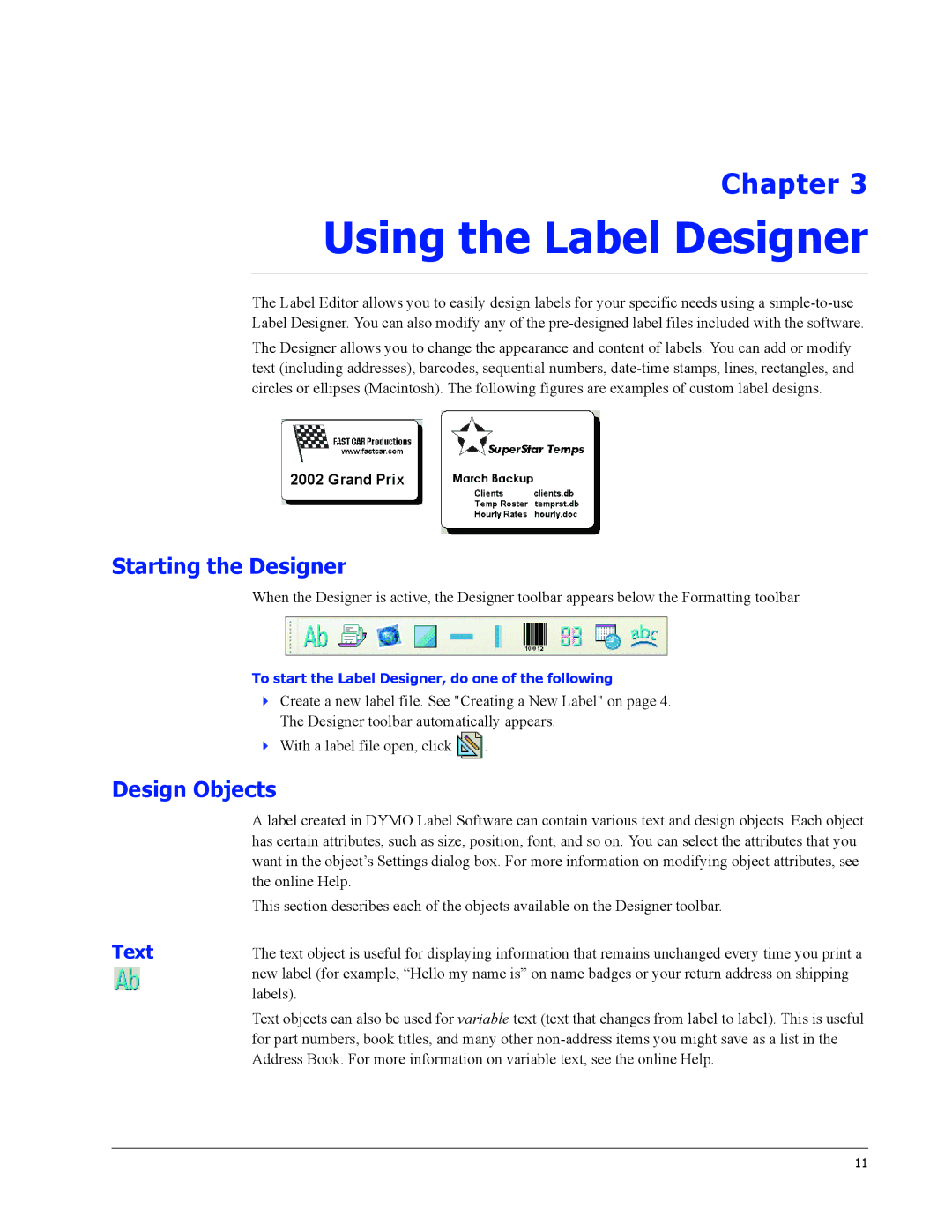
Chapter 3
Using the Label Designer
The Label Editor allows you to easily design labels for your specific needs using a
The Designer allows you to change the appearance and content of labels. You can add or modify text (including addresses), barcodes, sequential numbers,
Starting the Designer
When the Designer is active, the Designer toolbar appears below the Formatting toolbar.
To start the Label Designer, do one of the following
Create a new label file. See "Creating a New Label" on page 4.
The Designer toolbar automatically appears.
With a label file open, click ![]() .
.
Design Objects
| A label created in DYMO Label Software can contain various text and design objects. Each object |
| has certain attributes, such as size, position, font, and so on. You can select the attributes that you |
| want in the object’s Settings dialog box. For more information on modifying object attributes, see |
| the online Help. |
| This section describes each of the objects available on the Designer toolbar. |
Text | The text object is useful for displaying information that remains unchanged every time you print a |
| new label (for example, “Hello my name is” on name badges or your return address on shipping |
| labels). |
| Text objects can also be used for variable text (text that changes from label to label). This is useful |
| for part numbers, book titles, and many other |
| Address Book. For more information on variable text, see the online Help. |
11
